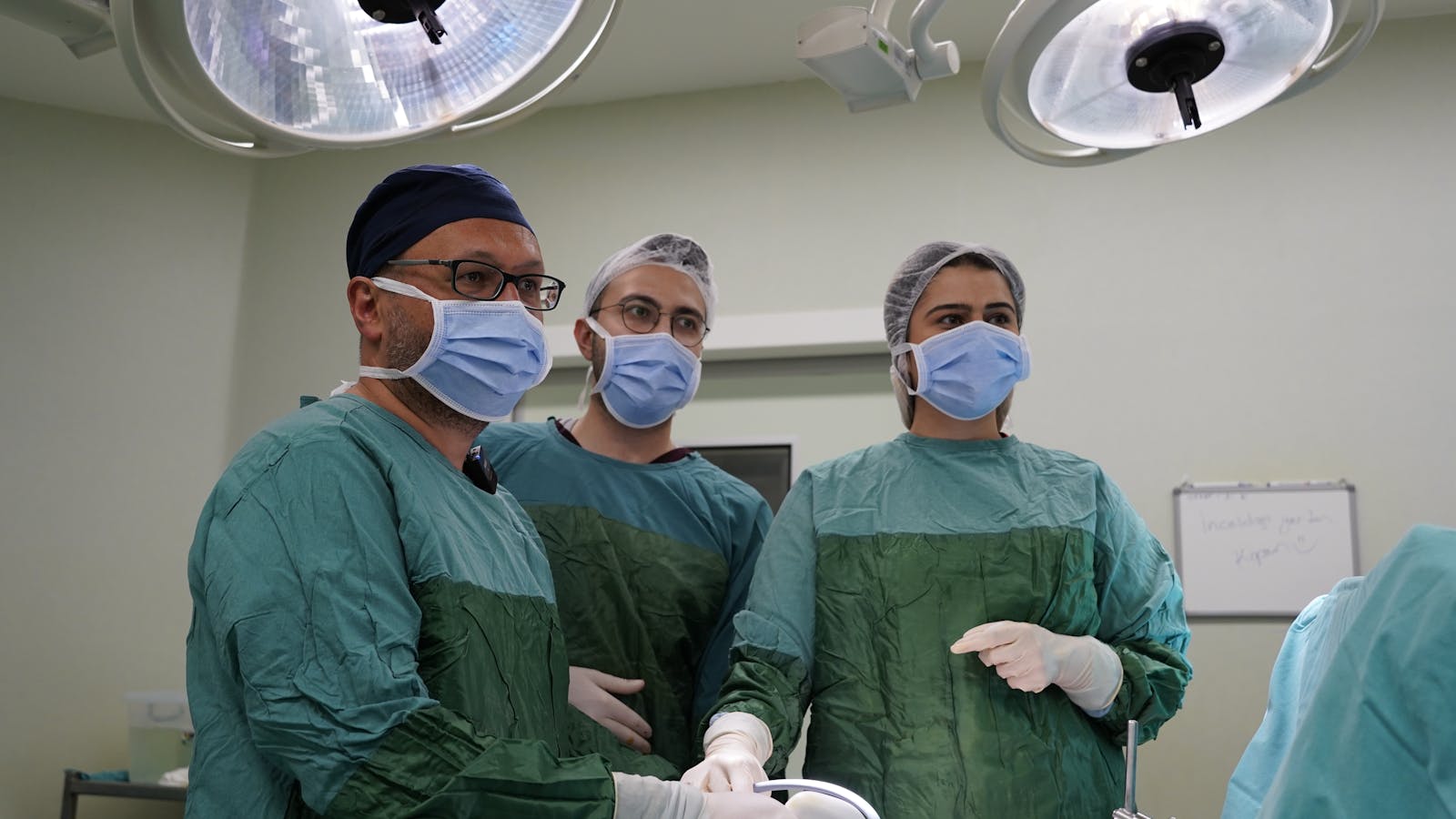The management of long-term risks associated with coccygectomy surgery, a procedure involving the removal of the coccyx or tailbone, poses a significant challenge in the realm of medical practice. A critical exploration into the potential post-operative complications not only sheds light on the complexities of this surgical intervention but also highlights the importance of robust strategies for risk mitigation. As this intricate subject unfolds, one may begin to appreciate the profound impact such knowledge can have on improving patient outcomes and the overall quality of healthcare delivery.
Understanding Coccygectomy Surgery
Frequently performed to alleviate persistent tailbone pain, coccygectomy surgery involves the surgical removal of the coccyx or tailbone, a procedure that requires meticulous surgical expertise due to the coccyx’s proximity to significant neurovascular structures. In the realm of coccygectomy alternatives, there are several non-surgical approaches. These include pain management through medication, physical therapy, and nerve block injections.
Comparative analysis of such alternatives with coccygectomy surgery illuminates the strengths and limitations of each option. Non-surgical procedures, while less invasive, may only provide temporary relief and may not address the root cause of the pain. On the other hand, coccygectomy, while effective, presents potential risks such as infection, persistent pain, and complications from anesthesia.
Furthermore, coccygectomy surgery necessitates a longer recovery period compared to non-surgical interventions. Patients usually require several weeks to months of recuperation. However, the surgery often yields more permanent relief from tailbone pain.
Pre-operative Risk Assessment
Prior to undertaking coccygectomy surgery, an extensive pre-operative risk assessment is conducted to evaluate the patient’s overall health, potential susceptibility to anesthesia-related complications, and the likelihood of post-operative infections or other surgical risks. This assessment is a comprehensive approach that involves the collaboration of the patient, surgeon, and anesthesiologist, with the aim of identifying potential challenges that may arise during and after the surgical procedure.
The pre-operative risk assessment process includes:
- Detailed medical history review: Uncovering any existing medical conditions that might complicate the surgery or recovery process.
- Physical examination: Assessing the patient’s current health status to gauge fitness for surgery.
- Diagnostic tests: These can include blood tests, imaging studies, and other relevant tests to provide a clear picture of the patient’s health.
Patient education is a crucial component of this phase, ensuring patients understand the potential risks and complications, as well as the surgical alternatives that may be available. This empowers them to make informed decisions about their healthcare. By meticulously evaluating these factors, healthcare providers can formulate an individualized surgical plan that minimizes risks and maximizes the potential for a successful outcome.
Common Post-operative Complications
Post-operative complications following coccygectomy surgery pose significant challenges to patient recovery and long-term well-being. Critical among these are the potential for infections, the management of post-surgical pain, and the essential role of physical therapy in successful rehabilitation. Each of these factors requires a thorough understanding and strategic approach to mitigate risks and promote optimal patient outcomes.
Identifying Post-Surgery Infections
One of the notable complications following coccygectomy surgery is the development of post-operative infections, a condition that requires meticulous identification and prompt intervention to mitigate long-term risks. Infection indicators such as fever, localized pain, redness, and swelling are often the initial signs of a potential infection.
However, the challenge in modern healthcare is the evolution of antibiotic resistance, making some infections difficult to treat. Therefore, the identification process must be comprehensive, considering factors such as:
- Patient’s medical history: Previous infections or exposure to antibiotic-resistant bacteria can inform possible risks.
- Wound appearance: Discoloration, discharge, and odor can be signs of infection.
- Laboratory tests: Blood tests can provide evidence of the body’s response to infection, while wound cultures can identify the specific bacteria involved.
Managing Pain Post-Coccygectomy
In the aftermath of coccygectomy surgery, effectively managing persistent pain, a common post-operative complication, calls for an integrated approach that is both patient-specific and adaptive. The perception of pain varies considerably among patients, underlining the need for an individualized, multi-modal pain management plan. Incorporating pharmacological interventions with analgesics, local anesthetics, and opioids can provide substantial relief. However, non-pharmacological strategies should not be overlooked. Emotional coping mechanisms, such as cognitive-behavioral therapy or mindfulness, can significantly alter patients’ pain perception, enhancing their ability to manage discomfort. Finally, regular reassessment of pain levels is crucial to adapt the pain management strategy over time, ensuring it remains effective as the patient’s condition evolves.
Physical Therapy Importance
Beyond the realm of pain management, the role of physical therapy emerges as a critical component in addressing common post-operative complications of coccygectomy. Physical therapy, specifically tailored to the patient’s individual needs, can significantly enhance recovery and mitigate long-term risks.
- Therapy duration: A prolonged and consistent therapy regime is often required to fully alleviate symptoms, restore functionality and prevent recurrence of pain.
- Equipment usage: Therapeutic equipment like pelvic stabilizers and mobility aids can facilitate rehabilitation, improving patient outcomes.
- Individualized therapy plan: The therapy plan should be meticulously designed considering the patient’s age, physical condition, and lifestyle to optimize the benefits.
In essence, physical therapy plays a pivotal role in managing long-term risks associated with coccygectomy surgery, warranting more attention in post-operative care.
Long-term Risks of Coccygectomy
In assessing the long-term risks associated with coccygectomy, two critical factors warrant particular attention: potential post-surgery complications and the management of chronic pain. Post-surgery complications, though infrequent, may include infection, hematoma formation, or in rare cases, a cerebrospinal fluid leak. Moreover, managing chronic pain after coccygectomy is a significant concern, as this procedure can potentially lead to protracted discomfort or even coccygodynia, a condition characterized by persistent pain in the coccyx area.
Potential Post-Surgery Complications
The long-term risks associated with coccygectomy surgery, while relatively rare, can present significant challenges and complications for patients post-operation. These complications can stem from wound care mismanagement, leading to infection, and improper healing processes, contributing to scar formation.
In detail, the potential post-surgery complications include:
- Wound Infection: Inadequate wound care can result in bacterial contamination, leading to the rise of potentially serious infections.
- Scar Formation: Incorrect or insufficient wound care can also prompt abnormal scar formation, which could cause discomfort or aesthetic concerns.
- Postoperative Hematoma: This refers to a collection of blood in the surgical area, which can induce pain or lead to further complications, such as infections, if not addressed promptly.
These complications necessitate meticulous postoperative management and patient education on proper wound care.
Managing Chronic Pain
Often, patients undergoing coccygectomy surgery may experience persistent discomfort, commonly known as chronic pain, which requires strategic and comprehensive management for optimal quality of life post-operation. A detailed study of such patients indicates that a combination of medical treatment and alternative therapies can be a successful approach to managing chronic pain post-coccygectomy. Alternative therapies, such as acupuncture and physiotherapy, have shown significant benefits in reducing pain intensity and improving mobility. Mindfulness techniques, such as meditation and deep-breathing exercises, can also aid in controlling the psychological aspects of chronic pain, including stress, anxiety, and depression. Careful analysis of these methods and continuous monitoring of the patient’s condition is crucial for effective pain management. This holistic and analytical approach contributes to long-term wellness and improved quality of life.
Pain Management Strategies
Effective pain management following a coccygectomy surgery is paramount in optimizing patient recovery and minimizing potential complications. The comprehensive pain relief strategy comprises of conventional analgesics, opioid usage and alternative therapies.
Conventional analgesics, such as non-steroidal anti-inflammatory drugs (NSAIDs), serve as the first line of defense. They control inflammation and provide moderate pain relief.
Opioids, potent pain relievers, are utilized cautiously due to their potential for dependency and side effects. They’re reserved for severe pain not managed by other medications.
Alternative therapies, including physiotherapy, acupuncture, and cognitive-behavioral therapy, play a crucial role in managing persistent pain. They provide an additional, non-pharmacological approach to pain control.
- Conventional Analgesics: NSAIDs are commonly used to manage postoperative pain and inflammation.
- Opioid Usage: While effective, their use should be judicious and monitored due to potential for addiction.
- Alternative Therapies: These methods are beneficial in managing long-term pain, reducing reliance on medications.
This multi-modal approach ensures effective pain management, enhancing patient comfort and facilitating recovery. It’s crucial to individualize strategies based on patients’ needs, their response to treatment, and potential risk factors. This comprehensive approach aids in managing the long-term risks associated with coccygectomy surgery.
Importance of Rehabilitation
Postoperative rehabilitation, an integral component of the recovery process, plays a pivotal role in minimizing complications and enhancing the quality of life for patients who have undergone coccygectomy surgery. This process, often involving a series of rehabilitation exercises, is designed to restore the strength and flexibility of the affected muscles and tissues, improve overall functionality, and reduce the risk of long-term physical discomfort.
Rehabilitation exercises constitute a critical tool in the postoperative recovery phase, with protocols typically encompassing a range of motion exercises, strengthening routines, and targeted stretching. These exercises, supervised by trained professionals, are progressively intensified based on the patient’s tolerance and recovery progress.
Support systems, both in the form of medical equipment and emotional support from family and caregivers, are another significant aspect of the rehabilitation process. Medical support systems like cushions and ergonomic chairs can aid in alleviating pressure on the surgical site, thus promoting healing and reducing discomfort. Emotional support, on the other hand, can help patients cope with the challenges of the recovery period, fostering resilience and enhancing patient compliance with the rehabilitation program.
Potential Psychological Impact
Beyond the physical ramifications of coccygectomy surgery, the potential psychological impact—manifesting in forms such as anxiety, depression, or post-traumatic stress—merits equal attention and rigorous investigation. The emotional toll that a major surgical procedure can have on a patient cannot be underestimated.
Emotional coping and psychological resilience are two key factors that play significant roles in a patient’s recovery process. The former refers to the methods used by patients to alleviate stress, while the latter pertains to the ability to recover quickly from difficulties.
- Emotional coping: This can involve various strategies, including seeking social support, utilizing relaxation techniques, and engaging in positive self-talk. Tailored psychological interventions can enhance these coping mechanisms, reducing distress and promoting recovery.
- Psychological resilience: This is a dynamic process that involves positive adaptation in the face of adversity. Post-surgery, patients can foster resilience through maintaining a positive outlook, focusing on personal growth, and recognizing their own strength and capabilities.
- Psychological intervention: Professional psychological help can be instrumental in mitigating the potential psychological impacts of coccygectomy surgery. This can range from one-on-one counseling sessions to group therapy programs.
Recurrence and Reoperation Risks
While the psychological aspects of coccygectomy surgery are indeed significant, another critical area to examine involves the potential for recurrence of coccydynia and the subsequent risks of reoperation. The recurrence rate of coccydynia post-coccygectomy can range from 7-34%, requiring a meticulous preoperative diagnostic evaluation to prevent unnecessary procedures.
When discussing reoperation, it is vital to consider the inherent risks, such as surgical site infection, hematoma formation, wound dehiscence, and prolonged pain. As such, the exploration of surgical alternatives becomes crucial. Techniques such as ganglion impar block, nerve ablations, or even non-surgical approaches like physiotherapy or drug therapy should be weighed against the potential complications of a second coccygectomy.
Insurance considerations also play a significant role in managing long-term risks. Insurance coverage may not always include the cost of reoperation, which can be a financial burden for the patient. It is therefore essential for healthcare providers to discuss these potential costs and coverage limitations with patients prior to surgery.
Role of Diet in Recovery
In the aftermath of coccygectomy surgery, diligent attention to nutritional intake is paramount as it significantly influences the healing process and potentially mitigates complications. Adequate nutrition is critical for wound healing, immune function, and overall recovery. The postoperative diet should, therefore, be balanced, diverse, and rich in essential nutrients.
The role of dietary components can be understood as follows:
- Protein: High protein intake is essential for tissue repair and immune function enhancement. Nutritional supplements like protein shakes may be beneficial in meeting increased protein needs.
- Vitamins and Minerals: Vitamins A, C, and E, along with zinc and copper, support wound healing and immune response. These can be obtained from a balanced diet or nutritional supplements.
- Hydration: Water is crucial for all bodily functions, and its importance increases post-surgery. Adequate hydration supports cell function, aids digestion, and prevents constipation, a common post-surgery issue.
Patients should consult with a dietitian or nutritionist to devise a postoperative diet plan that caters to their individual needs and promotes recovery. While diet alone cannot guarantee a complication-free recovery, it undeniably plays a substantial role in the overall healing process.
The Significance of Follow-up Appointments
Regularly scheduled follow-up appointments after coccygectomy surgery bear considerable significance, as they provide the healthcare team with an opportunity to assess the patient’s progress, detect potential complications early, and adjust treatment plans as necessary. These appointments form an integral part of the postoperative care pathway, contributing to the long-term success of the surgery.
The concept of appointment adherence is pivotal in the context of these follow-up visits. It involves the patient’s commitment to attending all scheduled appointments, thus allowing for timely identification and management of postoperative issues. Failure in appointment adherence can lead to undetected complications, delayed interventions, and ultimately, suboptimal surgical outcomes.
Treatment compliance, another key element, refers to the patient’s active participation in the prescribed care plan, which may include medication use, wound care, lifestyle modifications, and physical therapy. Compliance ensures that the therapeutic interventions achieve their intended effect, promoting healing and reducing the risk of complications.
Preventing Complications: A Checklist
To effectively prevent potential complications following coccygectomy surgery, a comprehensive checklist that encompasses various aspects of postoperative care is key to managing long-term risks associated with this procedure. This checklist should focus on critical areas such as Infection Prevention and Wound Care, which are two of the most common sources of post-surgical complications.
Here is a potential checklist:
- Infection Prevention: Ensure that the patient is educated about the signs of infection and understands the importance of adhering to the prescribed antibiotic regimen. The surgical area should be kept clean and dry, and any unexpected changes should be reported to the healthcare provider immediately.
- Wound Care: The surgical site requires meticulous care to prevent complications. This includes regular dressing changes under sterile conditions, monitoring for any signs of infection, and avoiding activities that might strain or disrupt the wound.
- Follow-up Appointments: Regular postoperative visits are crucial to monitor the patient’s recovery progress, assess the healing of the surgical site, and manage any arising complications promptly.
Frequently Asked Questions
What Is the Typical Recovery Timeline After Coccygectomy Surgery?
The typical recovery timeline post-coccygectomy surgery spans several weeks, incorporating pain management strategies and diligent wound care. Patients typically experience initial relief within a week, with complete recovery often taking up to four to six weeks.
Are There Any Specific Exercises or Physical Activities That Should Be Avoided Post-Surgery?
Post-surgery, certain activities should be avoided to ensure proper recovery. Specifically, high-impact exercises and those straining the lower back. Emphasis should be on posture maintenance and pain management, with gradual reintroduction of physical activities.
How Does Coccygectomy Surgery Affect Sexual Health and Fertility?
Coccygectomy surgery can potentially impact sexual functioning and fertility issues in some patients. However, these effects are typically temporary and can be managed with appropriate post-surgical care and rehabilitation strategies.
Are There Any Alternative Treatments to Coccygectomy Surgery for Managing Coccydynia?
Yes, alternative treatments for managing coccydynia include non-surgical methods such as pain management techniques, physical therapy, use of cushions, and medications. Each of these approaches can effectively alleviate pain without the need for surgery.
Can Coccygectomy Surgery Impact Bowel or Bladder Control?
Yes, coccygectomy surgery can potentially impact bowel or bladder control. Postoperative complications may include issues with continence. However, pain management and careful surgical procedures can significantly reduce these risks.



